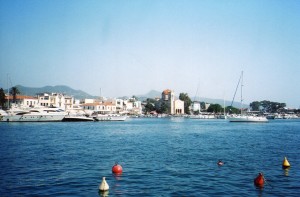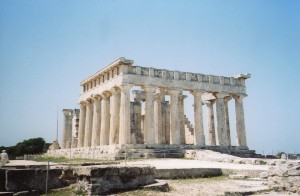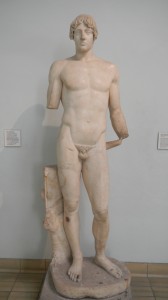Having just returned from Southeast Asia, I’m reliving memories from travels in Greece.
What a difference from Cambodia’s jungles. I found both equally enthralling. A boat trip from Athens to the island of Aegina showed me some of the origins of some of the West’s most basic thought patterns.
In The Birth of Classical Europe, Simon Price and Peter Thonemann wrote that the typical small island in the Aegean Sea rises only a few kilometers from its closest neighbors. The ancient Greek world was politically fragmented–city-states emerged in these islands and in the small, steep valleys on the mainland. But they weren’t isolated. It was easy to sail from one to the other.
Most of these little states specialized in certain goods, so they constantly traded with each other.
These islands, and the ancient Greek temple reflect the same reality:
1. A field of distinct entities, with clear boundaries.
2. Linear relationships between entities, and between their components–is any art in the world more beautiful than the Aegina’s temple’s colonnade?
3. Visual clarity–no Cambodian jungle murkiness here.
This model of reality has also shaped the most honored Western sculpture, from ancient Greece to Michelangelo’s David. Both the free-standing male nude, and the Greek temple are complete and well-proportioned. Westerners from ancient Greece to modern physicists have assumed that these are nature’s most enduring forms.
The Khmers lived in a different world, and they saw other patterns as most basic.
But as in Cambodia, the West’s most basic assumptions were shaped by a very rich mixture of currents. The physical landscape was one of the strongest. While I was on the boat, an island appeared every few minutes. Because of this, I kept looking for a coastline, even when none was visible. When an island came into view, its mountains stuck out of the water as definitively as a Greek temple.
For an untold number of ancient Greek traders and colonizers, this view was a model of well-being. It meant a return (nostos–a word that resonated deeply enough to become the main theme of Homer’s Odyssey)–a return to firm land and civilized life. This experience helped inspire some of the most influential art forms in the world.




Comments on this entry are closed.